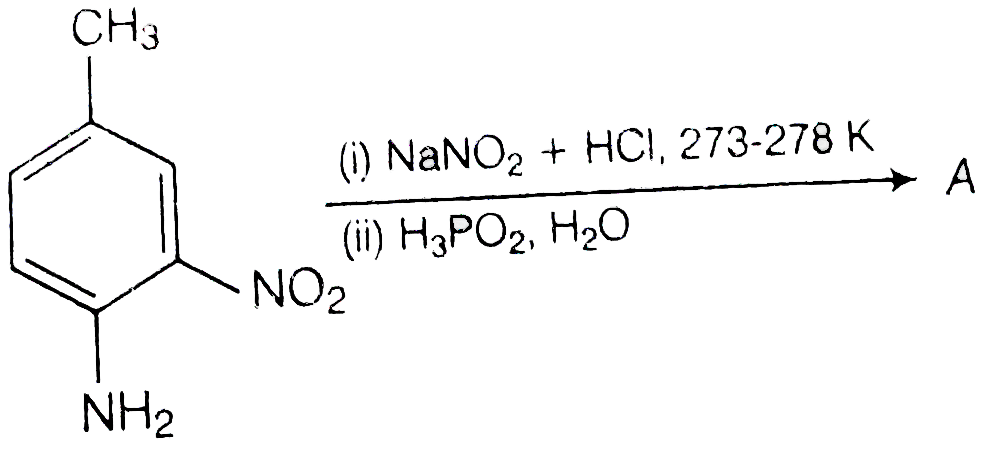How is boron obtained from borax ? Give the chemical reactions involved. Draw the structure of B2H6 and give its reaction with HCl.
To obtain boron from borax, we can follow a series of chemical reactions. Here’s a step-by-step breakdown of the process along with the relevant chemical equations.
Step 1: Reaction of Borax with Hydrochloric Acid
Borax, which has the chemical formula Na₂B₄O₇·10H₂O, reacts with hydrochloric acid (HCl) to form boric acid (H₃BO₃) and sodium chloride (NaCl).
Chemical Reaction:
\( \text{Na}_2\text{B}_4\text{O}_7 + 8 \text{HCl} \rightarrow 4 \text{H}_3\text{BO}_3 + 2 \text{NaCl} + 6 \text{H}_2\text{O} \)
Step 2: Hydrolysis of Boric Acid
Boric acid (H₃BO₃) can undergo hydrolysis, but in this case, we can directly proceed to the next step without a separate hydrolysis reaction since we are primarily interested in the conversion to boron.
Step 3: Heating Boric Acid
Boric acid is then heated to form boron trioxide (B₂O₃) and water (H₂O).
Chemical Reaction:
\( 2 \text{H}_3\text{BO}_3 \rightarrow \text{B}_2\text{O}_3 + 3 \text{H}_2\text{O} \)
Step 4: Reduction of Boron Trioxide
The boron trioxide (B₂O₃) is then reduced using a reducing agent such as sodium (Na) to produce elemental boron (B) and sodium oxide (Na₂O).
Chemical Reaction:
\( \text{B}_2\text{O}_3 + 6 \text{Na} \rightarrow 2 \text{B} + 3 \text{Na}_2\text{O} \)
Summary of Reactions
1. Borax with HCl:
\( \text{Na}_2\text{B}_4\text{O}_7 + 8 \text{HCl} \rightarrow 4 \text{H}_3\text{BO}_3 + 2 \text{NaCl} + 6 \text{H}_2\text{O} \)
2. Heating Boric Acid:
\( 2 \text{H}_3\text{BO}_3 \rightarrow \text{B}_2\text{O}_3 + 3 \text{H}_2\text{O} \)
3. Reduction of B₂O₃:
\( \text{B}_2\text{O}_3 + 6 \text{Na} \rightarrow 2 \text{B} + 3 \text{Na}_2\text{O} \)
Structure of B₂H₆ (Diborane)
The structure of diborane (B₂H₆) can be represented as follows:
HH B−BHH
In this structure, there are four terminal B-H bonds and two bridging B-H-B bonds, which are known as "banana bonds" or three-center two-electron bonds.
Reaction of B₂H₆ with HCl
When diborane reacts with hydrochloric acid (HCl), it forms chlorodiborane (B₂H₅Cl) and hydrogen gas (H₂).
Chemical Reaction:
\( \text{B}_2\text{H}_6 + \text{HCl} \rightarrow \text{B}_2\text{H}_5\text{Cl} + \text{H}_2 \)
Summary of the Solution
1. Obtaining boron from borax involves a series of reactions starting with borax and hydrochloric acid, followed by heating boric acid to form boron trioxide, and finally reducing boron trioxide to obtain elemental boron.
2. The structure of diborane (B₂H₆) consists of terminal and bridging bonds, and it reacts with HCl to form chlorodiborane and hydrogen gas.
Borax, which has the chemical formula Na₂B₄O₇·10H₂O, reacts with hydrochloric acid (HCl) to form boric acid (H₃BO₃) and sodium chloride (NaCl).
\( \text{Na}_2\text{B}_4\text{O}_7 + 8 \text{HCl} \rightarrow 4 \text{H}_3\text{BO}_3 + 2 \text{NaCl} + 6 \text{H}_2\text{O} \)
Boric acid (H₃BO₃) can undergo hydrolysis, but in this case, we can directly proceed to the next step without a separate hydrolysis reaction since we are primarily interested in the conversion to boron.
Boric acid is then heated to form boron trioxide (B₂O₃) and water (H₂O).
\( 2 \text{H}_3\text{BO}_3 \rightarrow \text{B}_2\text{O}_3 + 3 \text{H}_2\text{O} \)
The boron trioxide (B₂O₃) is then reduced using a reducing agent such as sodium (Na) to produce elemental boron (B) and sodium oxide (Na₂O).
\( \text{B}_2\text{O}_3 + 6 \text{Na} \rightarrow 2 \text{B} + 3 \text{Na}_2\text{O} \)
1. Borax with HCl:
\( \text{Na}_2\text{B}_4\text{O}_7 + 8 \text{HCl} \rightarrow 4 \text{H}_3\text{BO}_3 + 2 \text{NaCl} + 6 \text{H}_2\text{O} \)
2. Heating Boric Acid:
\( 2 \text{H}_3\text{BO}_3 \rightarrow \text{B}_2\text{O}_3 + 3 \text{H}_2\text{O} \)
3. Reduction of B₂O₃:
\( \text{B}_2\text{O}_3 + 6 \text{Na} \rightarrow 2 \text{B} + 3 \text{Na}_2\text{O} \)
The structure of diborane (B₂H₆) can be represented as follows:
When diborane reacts with hydrochloric acid (HCl), it forms chlorodiborane (B₂H₅Cl) and hydrogen gas (H₂).
\( \text{B}_2\text{H}_6 + \text{HCl} \rightarrow \text{B}_2\text{H}_5\text{Cl} + \text{H}_2 \)
1. Obtaining boron from borax involves a series of reactions starting with borax and hydrochloric acid, followed by heating boric acid to form boron trioxide, and finally reducing boron trioxide to obtain elemental boron.
2. The structure of diborane (B₂H₆) consists of terminal and bridging bonds, and it reacts with HCl to form chlorodiborane and hydrogen gas.
Topper's Solved these Questions
- BOOK - AAKASH INSTITUTE ENGLISHCHAPTER - THE P-BLOCK ELEMENTSEXERCISE - Assignment Section-J)16videos
THE P-BLOCK ELEMENTS
- BOOK - AAKASH INSTITUTE ENGLISHCHAPTER - THE P-BLOCK ELEMENTSEXERCISE - Assignment Section-H)10videos
THE P-BLOCK ELEMENTS
- BOOK - AAKASH INSTITUTE ENGLISHCHAPTER - THE D AND F-BLOCK ELEMENTS EXERCISE - Assingment ( Section-J Aakash Challengers Questions )10videos
THE D AND F-BLOCK ELEMENTS
- BOOK - AAKASH INSTITUTE ENGLISHCHAPTER - THE S-BLOCK ELEMENTSEXERCISE - Assignment (Section-J)10videos
THE S-BLOCK ELEMENTS
Similar Questions
Write the structure of B2H6 and its reaction with HCl(excess).
View SolutionHow is boron obtained from borax ? Give chemical equations with reaction conditions.
View SolutionHow will you convert ethane into ethanol? Give the chemical reaction involved.
View SolutionHow is ethene prepared from ethanol ? Give the reaction involved in it.
View SolutionHow is acetic acid obtained from acetylene (Give chemical equations only).
View SolutionHow is acetic acid obtained from acetylene (Give chemical equations only).
View SolutionHow is acetic acid obtained from acetylene (Give chemical equations only).
View SolutionGive the structure of 'A' in the following reaction.
 View Solution
View SolutionIdentify [A][B] and [C] and gives the complete chemical reactions involved.
 View Solution
View SolutionGive the chemical reaction, when ethanal is heated with HI.
View Solution

